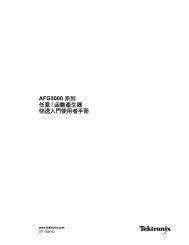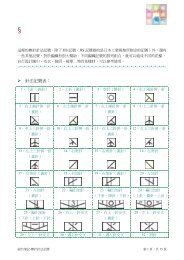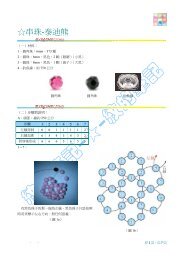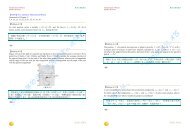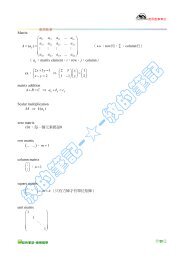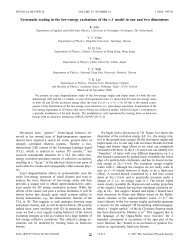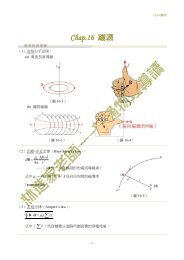Chapter 22 Materials Selection and Design Considerations
Chapter 22 Materials Selection and Design Considerations
Chapter 22 Materials Selection and Design Considerations
Create successful ePaper yourself
Turn your PDF publications into a flip-book with our unique Google optimized e-Paper software.
W118 • <strong>Chapter</strong> <strong>22</strong> / <strong>Materials</strong> <strong>Selection</strong> <strong>and</strong> <strong>Design</strong> <strong>Considerations</strong><br />
Computation of<br />
exposure rate of a<br />
hazardous chemical<br />
that is diffusing<br />
through a chemical<br />
protective glove<br />
material<br />
C A<br />
C B<br />
substitutions for<br />
sion for re: <strong>and</strong> into Equation <strong>22</strong>.28, we obtain the following expres-<br />
r e � DAS A<br />
/<br />
(<strong>22</strong>.29)<br />
Table <strong>22</strong>.5 also includes, for these several glove materials, values of that were<br />
determined using Equation <strong>22</strong>.29.<br />
At this point, a key question is: What is an acceptable <strong>and</strong> safe exposure rate?<br />
Based on airborne exposure limits set by the Occupational Safety <strong>and</strong> Health Administration<br />
(OSHA) of the US, the maximum allowable to methylene chloride<br />
is approximately 1 g/h.<br />
Now let us examine <strong>and</strong> compare computed breakthrough times <strong>and</strong> exposure<br />
rates for the several glove materials, as listed in Table <strong>22</strong>.5. First of all, with regard<br />
to exposure rate, two of the seven materials meet or exceed the st<strong>and</strong>ard set by<br />
OSHA (viz., 1 g/h)—viz. multilayer (Silver Shield TM ) <strong>and</strong> Viton TM re rubber (with re values of 0.43 <strong>and</strong> 0.35 g/h, respectively). Relative to breakthrough time, the multilayer<br />
material has the longer tb (24 h versus about 1 h for the Viton rubber). Furthermore,<br />
the multilayer gloves are considerably less inexpensive (at $US4.19 per<br />
pair compared to $US72.00 for Viton rubber, Table <strong>22</strong>.5).<br />
Therefore, of these two glove materials, other relevant characteristics/properties<br />
being equal, the one of choice for this application is multilayer Silver Shield. It<br />
has a significantly longer breakthrough time <strong>and</strong> is much less costly than the Viton<br />
rubber material, whereas there is very little difference between their exposure rates.<br />
The photograph of Figure <strong>22</strong>.27 shows a pair of Silver Shield gloves.<br />
It should be noted that calculated breakthrough time values presented in Table<br />
<strong>22</strong>.5 assumed the glove material had no previous exposure to methylene chloride.<br />
For a second application, some of the methylene chloride that dissolved in the glove<br />
during the first exposure probably remains; thus, the breakthrough time will be much<br />
shorter than predicted for an unused glove. For this reason, CPC gloves are often<br />
discarded after one usage.<br />
One final comment is in order: one should always consult an industrial hygiene<br />
specialist when selecting chemical protection clothing. These specialists are experts<br />
as to what materials are suitable for exposure to specific toxic chemical substances,<br />
Figure <strong>22</strong>.27 Photograph of Silver Shield<br />
multilayer chemical protective gloves.<br />
(Photograph courtesy of North Safety<br />
Products, Anjou, Quebec, Canada.)<br />
r e



